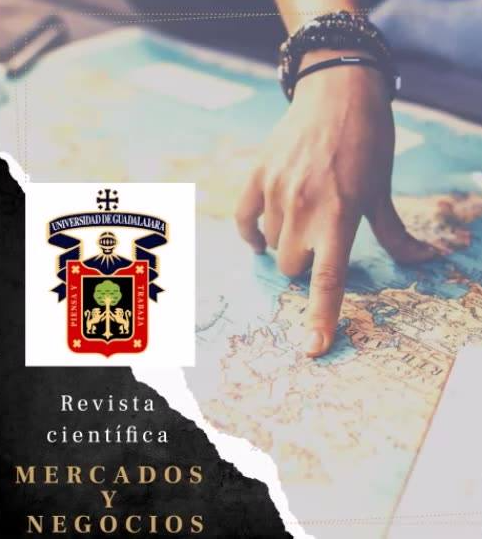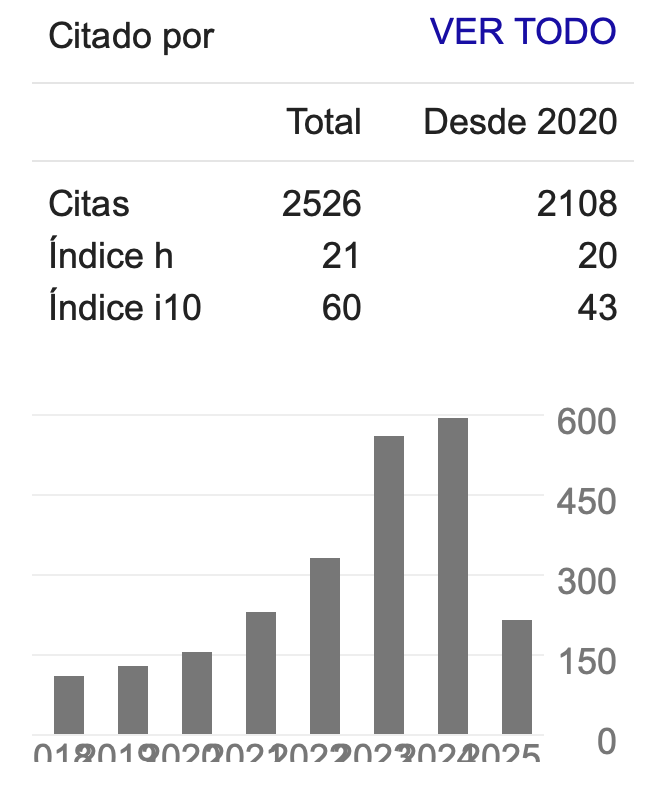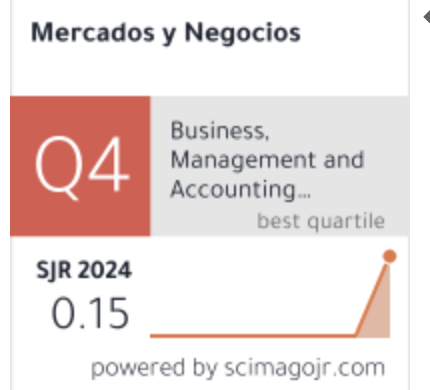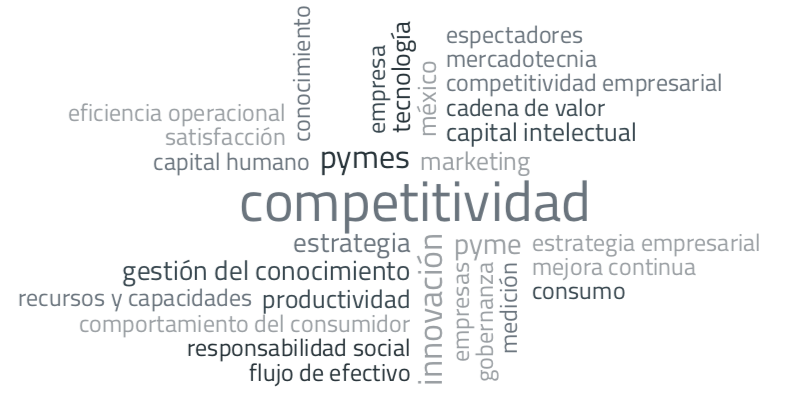Responsabilidad Social y ventaja competitiva: percepción de la gerencia de la empresa pequeña y mediana de Guadalajara, Jalisco
DOI:
https://doi.org/10.32870/myn.v0i34.6180Keywords:
competitividad, disminución de costos, desempeño financiero, reputación.Abstract
El objetivo de este artículo es identificar la relación entre la Responsabilidad Social (RSE) y la ventaja competitiva que establece el gerente de la empresa pequeña y mediana manufacturera. Mediante un trabajo de investigación mixto se recuperó y analizó la evidencia obtenida a través de 450 empresas manufactureras de la Zona metropolitana de Guadalajara. El principal informante fue el gerente a cargo de cada una de estas. El principal resultado es la asociación de la Responsabilidad Social Empresarial con la ventaja competitiva de forma independiente al desempeño financiero, la reducción de costos y el desempeño tecnológico. De esta misma forma, la gerencia percibe como un costo adicional a la RSE. La principal conclusión es que la adopción de la RSE es selectiva y simbólica en estas empresas.References
Aigner, D. (2016). Corporate Social Responsibility and Financial Performance. In Corporate Responsibility (pp. 11-37). Palgrave Macmillan UK.
Aksak, E., Ferguson, M., Duman, S. (2016). Corporate social responsibility and CSR fit as predictors of corporate reputation: A global perspective. Public Relations Review, 42(1), 79-81.
Allouche, J., Laroche, P. (2006). La relación entre las empresas Responsabilidad Social y Desempeño Corporativo Financiero: Un Estudio. Responsabilidad Social Corporativa: Actuaciones y las partes interesadas. Palgrave MacMillan, 3-40.
Anderson, J., Gerbing, D. (1988). Structural equation modeling in practice: a review and recommended two-step approach. Psychological Bulletin, 13, 411-423.
Arikan, E., Kantur, D., Maden, C., Telci, E. (2016). Investigating the mediating role of corporate reputation on the relationship between corporate social responsibility and multiple stakeholder outcomes. Quality & Quantity, 50(1), 129-149.
Attig, N., Boubakri, N., El Ghoul, S., & Guedhami, O. (2016). Firm internationalization and corporate social responsibility. Journal of Business Ethics, 134(2), 171-197.
Bagozzi, R., Yi, Y. (1988). On the evaluation of structural equation models. Journal of the academy of marketing science, 16(1), 74-94.
Baron, D. (2001). Private politics, corporate social responsibility, and integrated strategy. Journal of Economics & Management Strategy, 10(1), 7-45.
Barnett, M. (2007). Stakeholder influence capacity and the variability of financial returns to corporate social responsibility. Academy of Management Review, 32(3), 794-816.
Bear, S. Rahman, N., Post, C. (2010). The impact of board diversity and gender composition on corporate social responsibility and firm reputation. Journal of Business Ethics, 97, 207-221.
Bentler, P. (1990). Comparative fit indexes in structural models. Psychological Bulletin, 107(2), 238-246.
Bentler, P. (2005). EQS 6 Structural Equations Program Manual, Encino, CA: Multivariate Software.
Bentler, P., Bonnet, D. (1980). Significance tests and goodness of fit in analysis of covariance structures. Psychological Bulletin, 88, 588-606.
Bernal, C. (2010). Metodología de la investigación, administración, economía, humanidades y ciencias sociales. Pearson: Colombia.
Bertram, D. (2007). Likert Scales… are the meaning of life? CPSC Report: Tennessee.
Branco, M., Rodrigues, L. (2006). Corporate social responsibility and resource-based perspectives. Journal of business Ethics, 69(2), 111-132.
Brown, T. (2006). Confirmatory Factor Analysis for Applied Research, New York: The Guilford Press.
Byrne, B. (2006). Structural Equation Modeling with EQS, basic concepts, applications, and programming, 2th edition, London: LEA Publishers.
Calabrese, A., Costa, R., Menichini, T., Rosati, F., Sanfelice, G. (2013). Turning Corporate Social Responsibility‐driven Opportunities in Competitive Advantages: a Two‐dimensional Model. Knowledge and Process Management, 20(1), 50-58.
Carroll, A. (1991). The pyramid of corporate social responsibility: Toward the moral management of organizational stakeholders. Business horizons, 34(4), 39-48.
Carroll, A. (1999). Corporate social responsibility evolution of a definitional construct. Business & society, 38(3), 268-295.
Carroll, A. (2008). A history of corporate social responsibility. Concepts and Practices. Oxford: The Oxford Handbook of Corporate Social Responsibility.
Carroll, A., Shabana, K. (2010). The business case for corporate social responsibility: A review of concepts, research and practice. International journal of management reviews, 12(1), 85-105.
Chand, M., Fraser, S. (2006). La relación entre Social Corporativa Desempeño y Rendimiento Financiero Corporativo: Industria Tipo de límite Condición. El Business Review, 5(1), 240-245
Chau, P. (1997). Reexamining a model for evaluating information center success using a structural equation modeling approach. Decision Sciences, 28(2), 309-334.
Chou, C., Bentler, P., Satorra, A. (1991). Scaled test statistics and robust standard errors for non‐normal data in covariance structure analysis: a Monte Carlo study. British Journal of Mathematical and Statistical Psychology, 44(2), 347-357.
Choi, J., & Il Park, B. (2014). Environmentally responsible management of MNE subsidiaries: stakeholder perspective. Multinational Business Review, 22(1), 59-77.
Fernández, J., Luna, L. (2007). The creation of value through corporate reputation. Journal of Business Ethics, 76, 335-346.
Flatt, S., & Kowalczy, S. (2006). Corporate reputation as a mediating variable between corporate culture and financial performance. New York: Identity & Competitiveness.
Freeman, R. (1994). La política de la teoría de las partes interesadas: un futuro cómo llegar. Ética en los negocios trimestrales, 4(4), 409-421.
Fornell, C. and Larcker, D. (1981). Evaluating structural equation models with unobservable variables and measurement error. Journal of Marketing Research, l(18), 39-50.
Ghauri, P., Hadjikhani, A., & Elg, U. (2012). The Three Pillars: Business, State and Society: MNCs in Emerging Markets. Business, Society and Politics (International Business and Management, Volume 28) Emerald Group Publishing Limited, 28, 3-16.
González, T. (2013). Responsabilidad social como generadora de ventajas competitivas para la empresa agro-industrial mexicana. Revista de Responsabilidad Social de la Empresa, (15), 101-126.
González, T. (2015) Rasgos de la Responsabilidad Social en las empresas española, argentina y mexicana participantes en Al-Invest. Revista Universitaria Europea, N. 22, ECSA-AUDESCO, España
González, T.; González, S. & Martín, M. (2016) Strategy for generating social value to promote development and combat poverty: the case of Guatemala. En Competitiveness for Industry, Science and Education, Sánchez, J. (coord.), Universidad de Guadalajara, México
Görg, H., Hanley, A., Hoffmann, S., & Seric, A. (2016). When do multinational companies consider corporate social responsibility? A multi-country study in Sub-Saharan Africa. A Multi-Country Study in Sub-Saharan Africa (January 2016). Robert Schuman Centre for Advanced Studies Research Paper No. RSCAS, 3.
Griesse, M. (2007). The geographic, political, and economic context for corporate social responsibility in Brazil. Journal of Business Ethics, 73, 21-37.
Greening, D. W., & Turban, D. B. (2000). Corporate social performance as a competitive advantage in attracting a quality workforce. Business & Society, 39(3), 254-280.
Hadjikhani, A., Lee, J. W., & Park, S. (2016). Corporate social responsibility as a marketing strategy in foreign markets: the case of Korean MNCs in the Chinese electronics market. International Marketing Review, 33(4).
Hair, J.F., Anderson, R.E., Tatham, R.L. and Black, W.C. (1995). Multivariate Data Analysis with Readings. New York: Prentice-Hall.
Harjoto, M., & Laksmana, I. (2016). The Impact of Corporate Social Responsibility on Risk Taking and Firm Value. Journal of Business Ethics, 1-21.
Hatcher, L. (1994). A Step by Step Approach to Using the SAS System for Factor Analysis and Structural Equation Modeling. Cary, NC: SAS Institute Inc.
Heck, R.H. (1998). Factor analysis: exploratory and confirmatory approaches. In Marcoulides, G.A. (Ed.), Modern Methods for Business Research, Mahwah, NJ: Lawrence Erlbaum Associates.
Hu, L. T., Bentler, P. M., & Kano, Y. (1992). Can test statistics in covariance structure analysis be trusted?. Psychological bulletin, 112(2), 351.
Husted, B. W., & Allen, D. B. (2007). Strategic corporate social responsibility and value creation among large firms: lessons from the Spanish experience. Long Range Planning, 40(6), 594-610.
Josefy, M., Kuban, S., Ireland, R. D., & Hitt, M. A. (2015). All things great and small: organizational size, boundaries of the firm, and a changing environment. The Academy of Management Annals, 9(1), 715-802.
Juscius, V., & Snieska, V. (2008). Influence of corporate social responsibility on competitive abilities of corporations. Inzinerine Ekonomika-Engineering Economics, (3), 34-44.
Keinert, C. (2008). Corporate Social Responsibility as an International Strategy. J&MC Quarterly, 86(1), 157-174.
Lai, C., Chiu, C. Yang, C., & Paid, D. (2010). The effects of Corporate Social Responsibility on Bran Performance: The Mediating Effect of Industrial Brand Equity and Corporate Reputation. Journal of Business Ethics, 95, 457-469.
Lee, E. M., Lee, H. J., Pae, J. H., & Park, S. Y. (2016). The important role of corporate social responsibility capabilities in improving sustainable competitive advantage. Social Responsibility Journal, 12(4).
Lévy, J. P., & Varela, J. (2003). Análisis multivariable para las ciencias sociales. Madrid, Editorial Pearson Educación.
Li, N., & Toppinen, A. (2011). Corporate responsibility and sustainable competitive advantage in forest-based industry: Complementary or conflicting goals?. Forest Policy and Economics, 13(2), 113-123.
Mackey, A., Mackey, T. B., & Barney, J. B. (2007). Corporate social responsibility and firm performance: Investor preferences and corporate strategies. Academy of management review, 32(3), 817-835.
Martínez-Ferrero, J., Banerjee, S., & García-Sánchez, I. M. (2016). Corporate social responsibility as a strategic shield against costs of earnings management practices. Journal of Business Ethics, 133(2), 305-324.
Mayorga, P., Gutiérrez, J. & González, E. (2014). La responsabilidad social y los impactos que influyen en la competitividad de las pymes manufactureras de Guadalajara. Mercados y Negocios, (30).
McWilliams, A., & Siegel, D. S. (2010). Creating and capturing value: Strategic corporate social responsibility, resource-based theory, and sustainable competitive advantage. Journal of Management, 0149206310385696.
McWilliams, A., Siegel, D. (2001). Responsabilidad Social Empresarial: Un Teoría de la Perspectiva de Empresa. Academy of Management Review, 26 (1), 117-128.
Melo, T., & Garrido‐Morgado, A. (2012). Corporate reputation: A combination of social responsibility and industry. Corporate Social Responsibility and Environmental Management, 19(1), 11-31.
Michelon, G., Boesso, G., & Kumar, K. (2013). Examining the link between strategic corporate social responsibility and company performance: an analysis of the best corporate citizens. Corporate Social Responsibility and Environmental Management, 20(2), 81-94.
Nunnally, J.C. and Bernstein, I.H. (1994). Psychometric Theory, 3ª Ed., New York: McGraw-Hill.
Orlitzky,M,, Schmidt, F., & Rynes, S. (2003). Corporate Social and Financial Performance: A Meta-analysis. Organization studies, 24(3), 403-441.
Park, B. I., & Ghauri, P. N. (2015). Determinants influencing CSR practices in small and medium sized MNE subsidiaries: A stakeholder perspective. Journal of World Business, 50(1), 192-204.
Pinkston, T. S., & Carroll, A. B. (1996). A retrospective examination of CSR orientations: Have they changed?. Journal of Business Ethics, 15(2), 199-206.
Pirson, M., & Lawrence, P. (2007). Humanism in Business – Towards a Paradigm Shift? Journal of Business Ethics, 93, 553–565.
Porter, M., Kramer, M. (2006). Estrategia y sociedad: el vínculo entre la Ventaja Competitiva y Responsabilidad Social Corporativa. Harvard Business Review en español, 78-88.
Reverte, C., Gómez-Melero, E., & Cegarra-Navarro, J. G. (2016). The influence of corporate social responsibility practices on organizational performance: evidence from Eco-Responsible Spanish firms. Journal of Cleaner Production, 112, 2870-2884.
Ruf, B. M., Muralidhar, K., Brown, R. M., Janney, J. J., & Paul, K. (2001). An empirical investigation of the relationship between change in corporate social performance and financial performance: A stakeholder theory perspective. Journal of Business ethics, 32(2), 143-156.
Russo, M., Fouts, P. (1997). Una perspectiva basada en los recursos de las empresas Ambiental rendimiento y la rentabilidad. Academy of Management Journal, 40(3), 534-559.
Satorra, A. and Bentler, P.M. (1988). Scaling corrections for chi square statistics in covariance structure analysis. American Statistics Association 1988 Proceedings of the Business and Economic Sections, 208-313.
Siegele, L., & Ward, H. (2007). Corporate social responsibility: a step towards stronger involvement of business in mea implementation? Journal compilation of the Foundation for International Environmental Law and Development, 16(2), 135–144.
Sethi, S.P. (1975). Dimensions of corporate social performance-an analytical framework. California Management Review, 17(3), 58.
Sánchez, J.; Mayorga, P; González, E. (2013). Corporate social responsibility effects on competitivennes: Manufacturing SMEs in Guadalajara, México. In Competition Forum (Vol. 11, No. 1, p. 153). American Society for Competitiveness.
Shim, K., & Yang, S. U. (2016). The effect of bad reputation: The occurrence of crisis, corporate social responsibility, and perceptions of hypocrisy and attitudes toward a company. Public Relations Review, 42(1), 68-78.
Smith, A. D. (2007). Making the case for the competitive advantage of corporate social responsibility. Business Strategy Series, 8(3), 186-195.
Wang, H., Tong, L., Takeuchi, R., & George, G. (2016). Corporate Social Responsibility: An Overview and New Research Directions Thematic Issue on Corporate Social Responsibility. Academy of Management Journal, 59(2), 534-544.
Wickert, C., Scherer, A. G., & Spence, L. J. (2016). Walking and talking corporate social responsibility: Implications of firm size and organizational cost. Journal of Management Studies.
Wickert, C., Vaccaro, A., & Cornelissen, J. (2016). “Buying” corporate social responsibility: organisational identity orientation as a determinant of practice adoption. Journal of Business Ethics, 1-18.
Published
How to Cite
Issue
Section
License
Mercados y Negocios by Department of Mercadotecnia y Negocios Internacionales. University of Guadalajara is licensed under a License Creative Commons Attribution-NonCommercial 4.0 International.
The author retains the copyright.








